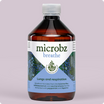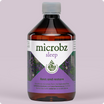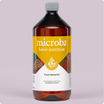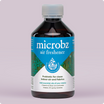Garlic
Allium sativum

Family: Amaryllidaceae
Which probiotic is it in?: Garlic is a key herb in Sustain and Immunity
Habit and cultivation: Now grown throughout the world, garlic originates from Asia. The cloves are usually planted midwinter as garlic requires a chilly period (below 10C) before the warmer weather of spring and summer sets in. It flourishes best in rich, moist, sandy soil, free from weeds and is harvested the following summer.
Actions (known for): Anti-microbial, anti-hypertensive, anti-tumorigenic, anti-thrombotic, anthelmintic, hypolipidaemic, expectorant, hypocholesterolaemic, anti-inflammatory, cholagogue and diaphoretic.
History of Garlic
Parts used from the Garlic
Bulb.
Constituents (bio available chemicals):
Volatile oil about 2% including sulphur containing compounds accounting for over 90% of the volatile oil – alliin, allicin, ajoene and various other sulphides.
Nutritional constituents:
Vitamins: A, B1, C and E.
Indications:
Treatment and prevention of atherosclerosis, elevated blood lipids and thrombosis. Reduces blood pressure, decreases blood viscosity. Hypertension, phlebitis, varicose veins, hyperlipidaemia, respiratory infections including throat and tonsils, influenza, asthma, acute and chronic bronchitis, recurrent colds and whooping cough. It is also anti-microbial to the gut, stimulates digestive secretions and promotes regular peristaltic action and can be useful in the treatment of typhoid, cholera, worms, dysentery, food poisoning, and flatulence. Increases assimilation of B1.
Dosage:
Liquid extract (1:1): 40-80ml per week. Fresh: 2-5g pieces bruised, crushed or chewed bulbs.
British Herbal Pharmacopoeia
Over 1000 research papers have been published on the medicinal effects of garlic. It has been proven to lower cholesterol, keep the blood thin and prevent against blood clots, to have antibiotic activity and to lower raised blood pressure and blood sugar levels. Increases Natural-Killer cells, improves the treatment of leprosy, increases the potential to kill tumour cells and improves the treatment of tuberculosis.
Cautions for therapeutic doses
Has been known to cause GI upset, heartburn, nausea, vomiting and diarrhea.




































